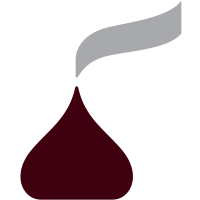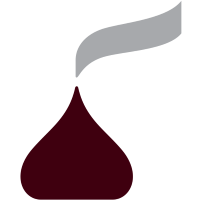
Hershey Co
NYSE:HSY


| US |

|
Johnson & Johnson
NYSE:JNJ
|
Pharmaceuticals
|
| US |

|
Berkshire Hathaway Inc
NYSE:BRK.A
|
Financial Services
|
| US |

|
Bank of America Corp
NYSE:BAC
|
Banking
|
| US |

|
Mastercard Inc
NYSE:MA
|
Technology
|
| US |

|
UnitedHealth Group Inc
NYSE:UNH
|
Health Care
|
| US |

|
Exxon Mobil Corp
NYSE:XOM
|
Energy
|
| US |

|
Pfizer Inc
NYSE:PFE
|
Pharmaceuticals
|
| US |

|
Palantir Technologies Inc
NYSE:PLTR
|
Technology
|
| US |

|
Nike Inc
NYSE:NKE
|
Textiles, Apparel & Luxury Goods
|
| US |

|
Visa Inc
NYSE:V
|
Technology
|
| CN |

|
Alibaba Group Holding Ltd
NYSE:BABA
|
Retail
|
| US |

|
3M Co
NYSE:MMM
|
Industrial Conglomerates
|
| US |

|
JPMorgan Chase & Co
NYSE:JPM
|
Banking
|
| US |

|
Coca-Cola Co
NYSE:KO
|
Beverages
|
| US |

|
Walmart Inc
NYSE:WMT
|
Retail
|
| US |

|
Verizon Communications Inc
NYSE:VZ
|
Telecommunication
|
Utilize notes to systematically review your investment decisions. By reflecting on past outcomes, you can discern effective strategies and identify those that underperformed. This continuous feedback loop enables you to adapt and refine your approach, optimizing for future success.
Each note serves as a learning point, offering insights into your decision-making processes. Over time, you'll accumulate a personalized database of knowledge, enhancing your ability to make informed decisions quickly and effectively.
With a comprehensive record of your investment history at your fingertips, you can compare current opportunities against past experiences. This not only bolsters your confidence but also ensures that each decision is grounded in a well-documented rationale.
Do you really want to delete this note?
This action cannot be undone.

| 52 Week Range |
168.94
208.17
|
| Price Target |
|
We'll email you a reminder when the closing price reaches USD.
Choose the stock you wish to monitor with a price alert.

|
Johnson & Johnson
NYSE:JNJ
|
US |

|
Berkshire Hathaway Inc
NYSE:BRK.A
|
US |

|
Bank of America Corp
NYSE:BAC
|
US |

|
Mastercard Inc
NYSE:MA
|
US |

|
UnitedHealth Group Inc
NYSE:UNH
|
US |

|
Exxon Mobil Corp
NYSE:XOM
|
US |

|
Pfizer Inc
NYSE:PFE
|
US |

|
Palantir Technologies Inc
NYSE:PLTR
|
US |

|
Nike Inc
NYSE:NKE
|
US |

|
Visa Inc
NYSE:V
|
US |

|
Alibaba Group Holding Ltd
NYSE:BABA
|
CN |

|
3M Co
NYSE:MMM
|
US |

|
JPMorgan Chase & Co
NYSE:JPM
|
US |

|
Coca-Cola Co
NYSE:KO
|
US |

|
Walmart Inc
NYSE:WMT
|
US |

|
Verizon Communications Inc
NYSE:VZ
|
US |
This alert will be permanently deleted.
 Hershey Co
Hershey Co
Hershey Co
Investor Relations
In the heart of Pennsylvania, amid the rolling hills, Hershey Co. has crafted a legacy as enduring as its rich, cocoa-laden confections. Founded by Milton S. Hershey in 1894, the company began its journey with the ambitious vision of making chocolate accessible to everyone, not just the elite. Today, Hershey Co. stands as a titan in the global confectionery market, renowned for its iconic chocolate bars, Reese's peanut butter cups, and a diverse array of sweet treats. Operating within three primary segments—North America's Confectionery, International and Other, and North America's Salty Snacks—the company skillfully navigates the complexities of a billion-dollar industry. It combines innovation with its storied brand image to deliver products that resonate with consumers globally.
Central to its success, Hershey's business model hinges on producing and marketing its goods across a well-oiled distribution network that taps into retail giants, wholesale distributors, and direct-to-consumer channels. This extensive reach ensures its products find their way into countless homes and celebrations. Yet, Hershey does not rest on the laurels of its renowned brand; it continually evolves by expanding its portfolio, including acquisitions like Amplify Snack Brands, to diversify into the snacking industry. This strategic blend of tradition and innovation enables Hershey to not only sustain its celebrated status but also to sweeten its financial performance year after year.

In the heart of Pennsylvania, amid the rolling hills, Hershey Co. has crafted a legacy as enduring as its rich, cocoa-laden confections. Founded by Milton S. Hershey in 1894, the company began its journey with the ambitious vision of making chocolate accessible to everyone, not just the elite. Today, Hershey Co. stands as a titan in the global confectionery market, renowned for its iconic chocolate bars, Reese's peanut butter cups, and a diverse array of sweet treats. Operating within three primary segments—North America's Confectionery, International and Other, and North America's Salty Snacks—the company skillfully navigates the complexities of a billion-dollar industry. It combines innovation with its storied brand image to deliver products that resonate with consumers globally.
Central to its success, Hershey's business model hinges on producing and marketing its goods across a well-oiled distribution network that taps into retail giants, wholesale distributors, and direct-to-consumer channels. This extensive reach ensures its products find their way into countless homes and celebrations. Yet, Hershey does not rest on the laurels of its renowned brand; it continually evolves by expanding its portfolio, including acquisitions like Amplify Snack Brands, to diversify into the snacking industry. This strategic blend of tradition and innovation enables Hershey to not only sustain its celebrated status but also to sweeten its financial performance year after year.





























 You don't have any saved screeners yet
You don't have any saved screeners yet
